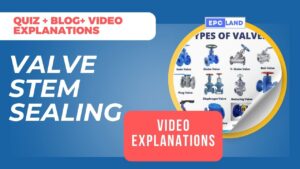1. Introduction to Pipeline Pigging
Pipeline pigging, often simply referred to as “pigging,” is a maintenance technique used in various industries to clean, inspect, and maintain pipelines. The term “pig” originates from the early devices that were cylindrical in shape and made squealing sounds as they moved through the pipelines. Over time, these devices evolved into complex tools equipped with advanced technology.
Pipeline systems are the arteries of modern industries, facilitating the transportation of liquids, gases, and other materials over vast distances. Ensuring the proper functioning and longevity of these pipelines is of paramount importance. One of the key techniques employed in pipeline maintenance is pigging. In this comprehensive guide, we will delve into the world of pipeline pigging, exploring its methods, benefits, applications, and more.
Table of Contents
2. Understanding the Pigging Process
Pigging Methods
Pigging methods can be categorized into two main types: liquid pigging and solid pigging.
Liquid Pigging
Liquid pigging involves using a liquid, often a cleaning solution or a product, to push through the pipeline. This method is effective for removing debris, sediment, and buildup from the inner walls of the pipeline.
Solid Pigging
Solid pigging, on the other hand, uses solid devices inserted into the pipeline. These solid pigs are designed to scrape and clean the interior of the pipeline. They are particularly useful in removing tough deposits and stubborn contaminants.
Types of Pigs
Various types of pigs are used in pipeline maintenance, each designed for specific functions:
- Cleaning Pigs: These pigs are equipped with brushes, scrapers, or other cleaning mechanisms to remove deposits and buildup from the pipeline walls.
- Inspection Pigs: Fitted with advanced sensors and cameras, inspection pigs gather valuable data about the condition of the pipeline, identifying potential issues such as corrosion or cracks.
- Gauging Pigs: These pigs measure the internal diameter of the pipeline to ensure it meets regulatory standards and hasn’t been compromised.
- Utility Pigs: Utility pigs are versatile devices used for various purposes, including batching different products, separating materials, and performing specialized tasks.
3. Benefits of Pipeline Pigging
Pipeline pigging offers a range of benefits to industries that rely on efficient pipeline systems:
- Enhanced Efficiency: Regular pigging helps maintain a smooth inner pipeline surface, minimizing friction and improving the flow of materials.
- Reduced Downtime: By preventing the buildup of debris and contaminants, pigging reduces the frequency of maintenance shutdowns and operational downtime.
- Cost Savings: Improved efficiency, reduced downtime, and extended pipeline lifespan translate to significant cost savings over time.
- Data-driven Insights: Inspection pigs provide valuable data that enable proactive maintenance, reducing the risk of unexpected failures.
4. Applications of Pigging Technology
Pigging technology finds applications in diverse industries:
- Oil and Gas: In the oil and gas sector, pigging is used to clean pipelines transporting crude oil, refined products, and natural gas.
- Water Distribution: Pigging ensures the quality and integrity of water distribution pipelines, preventing contamination and ensuring water safety.
- Chemical Industry: Chemical pipelines require regular pigging to prevent cross-contamination and ensure the purity of transported chemicals.
5. Pipeline Integrity and Pigging
Maintaining pipeline integrity is crucial to prevent leaks, spills, and environmental disasters. Pigging contributes to pipeline integrity by:
- Corrosion Prevention: Regular cleaning and inspection through pigging help identify and address corrosion issues before they escalate.
- Crack Detection: Inspection pigs detect cracks and defects that might compromise the structural integrity of the pipeline.
6. Environmental Impact and Safety Considerations
Pipeline pigging, when performed correctly, has a positive impact on the environment by preventing leaks that could lead to soil and water contamination. Safety considerations include proper pigging procedure training, ensuring equipment integrity, and adhering to regulations.
7. FAQs about Pipeline Pigging
Q1: What is pipeline pigging? A1: Pipeline pigging is a maintenance technique involving the use of devices called “pigs” to clean, inspect, and maintain pipelines.
Q2: How often should pigging be performed? A2: The frequency of pigging depends on factors such as the type of material transported, the pipeline’s length, and the operating conditions.
Q3: What types of contaminants can pigs remove? A3: Pigs can remove various contaminants, including rust, debris, sediment, and wax buildup.
Q4: Can pigging prevent leaks? A4: Yes, pigging helps prevent leaks by maintaining pipeline integrity and identifying potential issues early.
Q5: Is pigging technology suitable for all types of pipelines? A5: Pigging technology can be adapted for different pipeline materials and sizes, making it suitable for a wide range of applications.
8. Conclusion
Pipeline pigging is an essential tool in the maintenance arsenal of industries that rely on efficient and safe pipeline operations. By understanding the pigging process, utilizing the right types of pigs, and embracing the benefits it offers, companies can ensure the integrity, longevity, and efficiency of their pipelines. With ongoing technological advancements, the role of pigging technology continues to evolve, enhancing its effectiveness and expanding its applications across various sectors.
In the realm of pipeline maintenance, pigging stands as a testament to human ingenuity and innovation, playing a vital role in sustaining the modern world’s infrastructure.
Recommended courses (Published on EPCLand):
- Basics of Piping Engineering
- Piping Layout Engineering
- Piping Material Engineering
- Piping Stress Analysis
- Complete Course on Piping Engineering
- Material Requisitions
- Piping Material Specifications
- Valve Material Specifications
Don’t miss the published articles on following:
Related Video
Attempt Quiz
Question 1:
What is pipeline pigging?
Explanation: Pipeline pigging refers to the process of cleaning, inspecting, and maintaining pipelines using devices called “pigs.” These devices are inserted into the pipeline and travel along the length of the pipe, performing various tasks.
Question 2:
Which of the following is NOT a common type of pipeline pig?
Explanation: While cleaning, inspection, and utility pigs are common types of pipeline pigs, there is no specific type known as a “Repair Pig.” Repair and maintenance tasks are typically performed separately from pigging operations.
Question 3:
What is the purpose of a cleaning pig?
Explanation: The purpose of a cleaning pig is to remove debris, scale, and deposits from the inside of the pipeline, ensuring proper flow and preventing buildup that can impede the transportation of materials.
Question 4:
What is a “smart pig” used for in pipeline pigging?
Explanation: A “smart pig” (also known as an intelligent pig or inline inspection tool) is used for inspecting the pipeline and collecting data on its condition. It can detect defects, corrosion, and other issues, providing valuable information for maintenance and repair planning.
Question 5:
What are the potential benefits of pipeline pigging?
Explanation: Pipeline pigging can lead to improved energy efficiency, increased flow capacity, and enhanced pipeline integrity by removing deposits, identifying defects, and facilitating maintenance activities.
Tags: Pipeline pigging, Pipeline maintenance, Pigging technology, Pipeline integrity, Oil and gas pipelines, Maintenance guide



